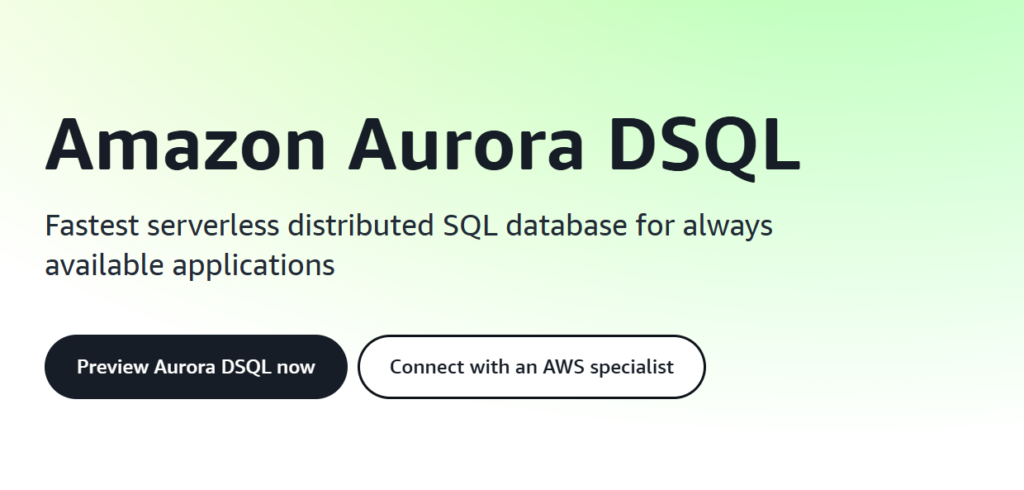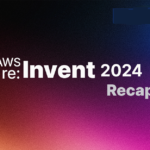AWS re:Invent 2024 unveiled groundbreaking innovations in data and analytics, solidifying AWS’s position as a leader in enabling enterprises to unlock insights, scale operations, and drive innovation. This year’s announcements include transformative updates across storage, databases, and analytics services, providing customers with cutting-edge tools for modern data architectures. Here’s a comprehensive breakdown of the key updates and their potential impact on businesses.
1. Amazon S3 Metadata (Preview): Accelerating Data Discovery

Amazon S3 Metadata introduces near real-time access to object metadata, empowering organizations to efficiently discover and organize data stored in S3. This feature allows users to surface, store, and query both system-defined and custom metadata. Built on managed S3 Tables with Apache Iceberg support, S3 Metadata integrates seamlessly with tools like Amazon Athena, Redshift, EMR, and QuickSight.
Benefits:
- Accelerate Data Discovery: Retrieve data from trillions of objects in S3 with ease.
- Custom Metadata: Annotate objects with tags such as SKUs or transaction IDs for better searchability.
- Seamless Integration: Leverage metadata in analytics workflows using AWS-native tools.

Use Cases:
- Content cataloging
- AI-generated content management
- Storage optimization
- Business analytics
2. Amazon Aurora DSQL: The Fastest Distributed SQL Database
Amazon Aurora DSQL redefines scalability and availability in distributed databases with a serverless architecture. Offering 99.999% multi-Region availability, Aurora DSQL provides seamless horizontal scaling, strong consistency, and zero infrastructure management.

Benefits:
- Virtually unlimited scale without sharding.
- High availability with strong consistency.
- Simplified operations with a PostgreSQL-compatible developer experience.
Use Cases:
- Building cloud-native applications.
- Developing scalable SaaS solutions.
- Deploying multi-Region applications for industries like ecommerce and banking.
3. Amazon DynamoDB Global Tables

DynamoDB Global Tables now support strong consistency (preview), enabling applications with zero recovery point objectives (RPO) for multi-Region workloads. Designed for 99.999% availability, these tables simplify global data replication and conflict resolution for distributed applications.
Benefits:
- Low-latency local reads and writes with global accessibility.
- Seamless multi-Region fault tolerance.
- Simplified operations for global applications.
Use Cases:
- Real-time gaming leaderboards.
- Multi-Region ecommerce applications.
- Resilient financial systems.

4. Amazon Q Developer: Enhancing Developer Productivity
The new capabilities in Amazon Q Developer focus on improving efficiency and code quality. Developers can now leverage agents for generating documentation, performing code reviews, and creating unit tests. Real-time code suggestions and legacy transformation capabilities further accelerate development workflows.
Key Features:
- Real-time code suggestions.
- Project bootstrapping and transformation for legacy applications.
- Secure integration with private repositories.
5. Amazon Q Business Insights with QuickSight

Amazon Q Business now integrates with QuickSight to provide unified insights across structured and unstructured data. With a robust index of over 40 enterprise data sources, Amazon Q delivers contextual answers, charts, and graphs for informed decision-making.
Benefits:
- Unified insights from databases, data lakes, and unstructured data.
- Enhanced integration with popular ISVs like Zoom and Asana.
- Simplified workflows and accelerated decisions.

6. Amazon DynamoDB Zero-ETL Integration with SageMaker Lakehouse
The zero-ETL integration between DynamoDB and SageMaker Lakehouse eliminates the need for custom data pipelines, enabling analytics and ML workloads on operational data without consuming table capacity.
Benefits:
- Simplified data integration for analytics.
- Reduced engineering complexity.
- Unified data access across S3 and Redshift.
Use Cases:
- Predictive analytics for operational data.
- Real-time ML applications.
7. Amazon S3 Tables

Amazon S3 Tables bring a transformative approach to managing and storing tabular data in your data lake. Leveraging the Apache Iceberg standard, this service allows for optimized query performance and cost savings, especially as your data scales.
Benefits:
- S3 Tables help simplify data lake management at any scale.
- One of the standout features of Amazon S3 Tables is its significant performance boost.
- Amazon S3 Tables is fully managed, which means it takes care of complex table maintenance tasks automatically.
- S3 Tables integrate seamlessly with a wide range of AWS and third-party query engines.
Use Cases:
- S3 Tables work with the AWS Glue Data Catalog, which simplifies metadata management.
- The improved query performance also helps reduce the overall cost of querying large datasets.
Unlocking the Future of Data and Analytics
The AWS re:Invent 2024 announcements highlight the power of AWS’s data ecosystem to accelerate innovation and improve decision-making. Whether it’s enhancing data discovery with Amazon S3 Metadata, scaling globally with DynamoDB Global Tables, or enabling zero-ETL ML workflows, these updates empower organizations to:
- Simplify data architecture with seamless integrations.
- Improve operational efficiency with serverless scalability.
- Unlock actionable insights with unified analytics and AI capabilities.
From startups to enterprises, AWS’s comprehensive offerings ensure that every organization can build, scale, and innovate with confidence in the rapidly evolving data-driven landscape.


